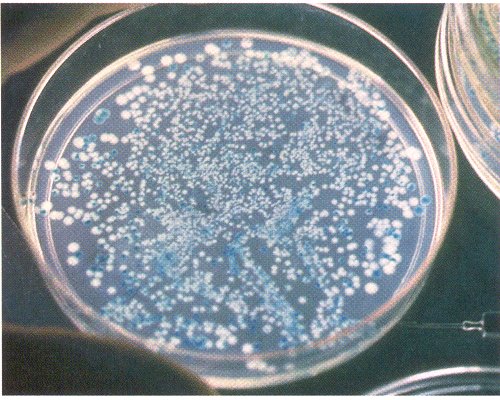
Colony plating test for successful DNA recombination

The medium in the
petri dish contains an antibiotic, as
well as
the sugar X-galactose (Xgal), which when digested by beta-galactosidase produces a blue
by-product. Beta-galactosidase is
the proeduct of the LacZ gene. The antibiotic & Xgal markers provide
a selection
scheme
for recombinant bacterial colonies, as follows. First, only bacterial
colonies that contain a plasmid-borne
antibiotic-resistance gene can
grow at all. Second, of those that grow, only those whose plasmids
carry a
functional LacZ in the polylinker can metabolize Xgal. Thus, those with an intact
polylinker (and
therefore no
insert) have a functional
LacZ gene:
they produce
blue
colonies. Those with a polylinker disrupted by an insert
have a non-functional LacZ gene, and
are unable to metabolize Xgal:
they therefore produce white
colonies. Thus, the white colonies
are the ones of interest.
The double-selection
scheme cuts down on the work required to evaluate the experiment.
Of the millions of bacteria on the
plate, and the hundreds of growing colonies that have taken up a
plasmid, only the few tens of white colonies stem from single
bacteria that contain recombinant
plasmids and need to be examined further. Other tests will show
if the recombinant inserts contain the
gene of interest.